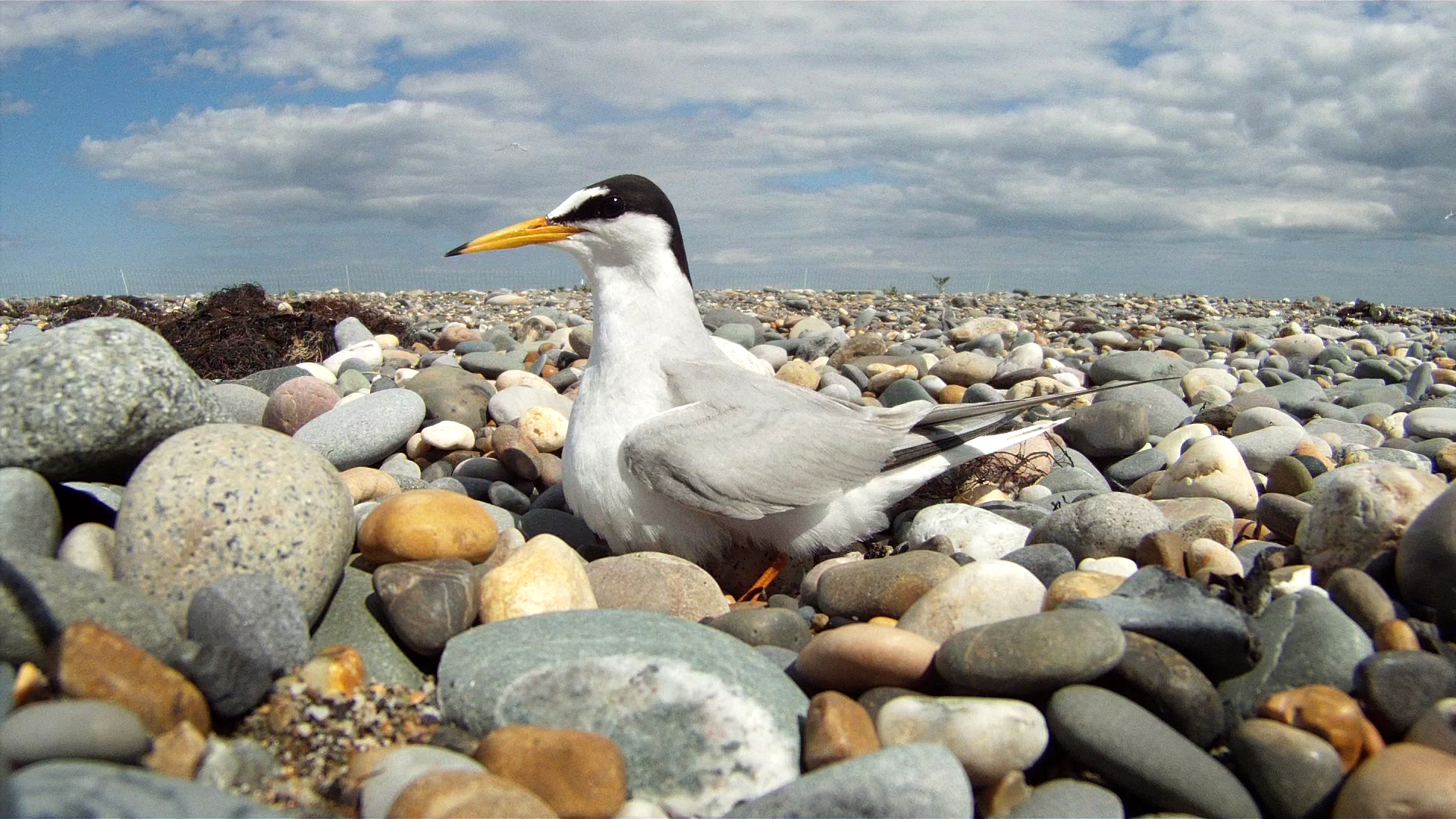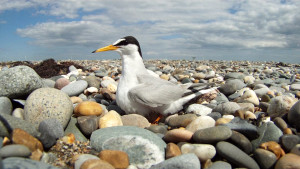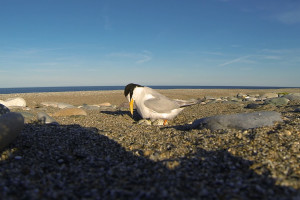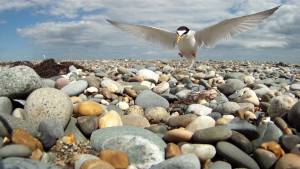- The remarkable bird life of the Wakatobi Islands, SE Sulawesi: hidden endemism and threatened populations - 10/07/2020
- The Bird Life of Wawonii and Muna Islands Part I: biodiversity recording in understudied corners of the Wallacea region - 30/06/2020
- Comparing the biodiversity and network ecology of restoredand natural mangrove forests in the Wallacea Region. - 09/12/2019
In a previous blog post we wrote about the Little Tern conservation project at Kilcoole, Co. Wicklow, which we worked on last summer. While working on this project we recorded a unique behavioural response from Little Terns in a response to inundation by high tides, which we have published in the latest issue of Irish Birds and write about below.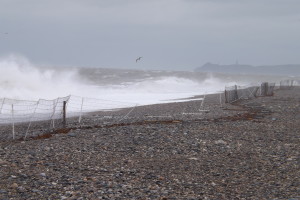
Little Terns nest in a scrape on shingle beaches and rely entirely on their camouflage for protection. Therefore they are acutely vulnerable to the effects of high tides. The terns of Kilcoole once again suffered the effects of high tides in 2014, when a tide breached the shingle ridge protecting the colony and washed over a large number of nests during the peak of nesting activity.
When the tide receded and we wardens could survey the damage, we feared the worst, with the seaweed line having been thrown over a large section of nests. Confirming these fears 12 nests had been completely washed away. However, to our surprise, 13 pairs of terns had managed to re-gather and move their clutches into new nest scrapes further up the beach after inundation by the tide. Though the movement of eggs into new nests has been observed in waders and waterfowl, most notably in the Piping Plover [1], this behaviour has never previously been recorded in a tern species.
We closely observed the outcome in these nests and unsurprisingly found that a significantly higher proportion of eggs from tide affected nests failed to hatch than from nests that were unaffected by the tide. The chill of the Irish Sea coupled with the mechanical damage caused by tide inundation were likely to have been (literally) a killer combination for the developing embryos within the eggs. However the 13 Little Tern pairs which had nests inundated by the tide still managed to produce 20 fledglings (out of 32 eggs in these nests). This was a remarkable achievement given the circumstances, attesting to the robustness of the tern eggs and adaptability of the parent birds, key attributes when living in an unpredictable environment.
Authors and photo credits
Darren O’Connell, Andrew Power and Susan Doyle
A special thanks to Cole Macey and Jerry Wray, our co-workers on the 2014 Kilcoole Little Tern project and project manager Dr Stephen Newton of BirdWatch Ireland.
[1] Wiltermuth, M.T., Anteau, M.J., Sherfy, M.H. and Shaffer, T.L. (2009) Nest movement by Piping Plovers in response to changing habitat conditions. Condor 111: 550–555. doi: http://dx.doi.org/10.1525/cond.2009.080106

